Wow, has it really been a year since I wrote an absurd amount of text about Raimais? Well, I guess it’s time to finally get to the last bit that I’ve been putting off.
Ohhhh boy.
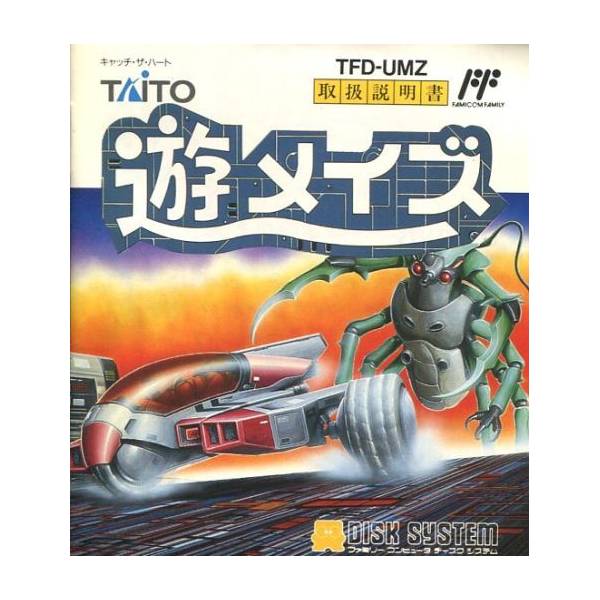 In 1988, the PC Engine’s base wasn’t quite there yet, the MegaDrive was on the cusp of launching, and the Super Famicom was still a ways off. However, the Famicom, and to a lesser extent the FDS, were going very strong. It made sense financially for companies to port their arcade games to the FC… even if the platform couldn’t do anything close to an accurate port.
In 1988, the PC Engine’s base wasn’t quite there yet, the MegaDrive was on the cusp of launching, and the Super Famicom was still a ways off. However, the Famicom, and to a lesser extent the FDS, were going very strong. It made sense financially for companies to port their arcade games to the FC… even if the platform couldn’t do anything close to an accurate port.
There were several approaches taken to dealing with the FC’s lack of arcade horsepower. Some developers tried to port as much of the gameplay and graphics as they possibly could, aware that cuts and compromises were inevitable. Other developers took the arcade game as a base, but heavily rearranged and added things to the game to make for a similar — but different — experience. Finally, there were the ports that threw out everything except the concepts and characters, making completely different games that just happened to have the same title as popular arcade titles.
Taito was a big fan of option B. They did a lot of ports of arcade games to the Famicom Disk System that had notable, distinct differences from their arcade originals. Most folks are aware of Bubble Bobble and Kikikaikai’s FDS incarnations, but few are aware that Raimais got this treatment as well — probably because it’s under a different name: Youmais, or Yuu Maze if you go from a straight kanji/kana reading.

No, seriously, though — calling it Yuu Maze is a HUGE pet peeve of mine. It says Youmais right there on the menu, and it’s a Raimais reinterpretation! Have you people even heard of ateji?
Unfortunately, Yuu Maze is the title you’re more likely to find this game listed under in English, though I steadfastly refuse to use that. It’s Youmais or nothing, and I’m sticking to it. Fight me, nerds.
ANYWAY. Youmais is fundamentally similar to Raimais in its premise and underlying gameplay. There are numerous differences between the two titles, however, and I’ll get to those in more detail shortly. But the biggest difference is how aggressively mediocre Youmais is.

If you’re wondering why it’s taken me so long to write about this game, it’s because playing it feels like a genuine chore while knowing how much better Raimais is. I decided a few weeks ago I was finally going to suck it up and get this written, when suddenly, I was made aware of pure propaganda claiming Youmais is a mindblowing revelation on a FDS disk.
Well, as self-proclaimed Number One Biggest Raimais Fan On-Line, I can’t let that stand unchallenged, now can I? So come with me as we take a look at how Youmais compares to its big sister. (Spoilers: not well.)
If you bought the game pre-packaged (and not on a FDS disk writer), you got a nice manual with the game containing the story, how to play, short character profiles, and questionable choices to save on the colored ink print budget. The story in the manual is a little bit different from Raimais, and because I’m a completionist, I’ve translated it for you!
Rescue your kidnapped brother from the syndicate!
Japan, 2088. The advance of science has brought about a revolution in motorized transit. Personal vehicles are no longer necessary; Thus, in the interest of public safety and accident prevention, the government has banned them. Yet those who long for the thrill and intoxication of speed have been forced underground to the HLR: the Holography Labyrinth Race. It’s an illegal gambling race run by Dr. Molto, where losers end up as slaves. Rika Midorikawa’s brother, Makoto, has lost and become a prisoner. To rescue Makoto, Rika has decided to participate in the race herself…
The manual also offers some rare extra bits of official art for the characters, clearly repurposed from art done for the arcade version. I treasure any official (and unofficial) Raimais art I can find, so let’s get these images out there!
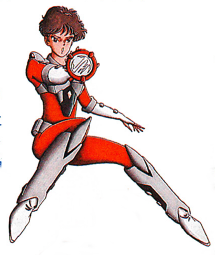 Rika is shown here brandishing the Light Mirror and spoiling the good ending of Raimais. It’s a weird pick to put in the manual, because the Light Mirror is totally not a thing in this game. I’m sure a few folks who only ever played this (oof) were left scratching their head like “what on earth is she holding?”
Rika is shown here brandishing the Light Mirror and spoiling the good ending of Raimais. It’s a weird pick to put in the manual, because the Light Mirror is totally not a thing in this game. I’m sure a few folks who only ever played this (oof) were left scratching their head like “what on earth is she holding?”
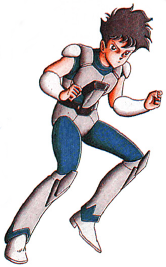
Here’s Makoto! Is it just me, or does he look younger in the art than his sprite does in Raimais? It’s clearer that he’s the younger brother here with his shonen-manga face. Not even a hint of murderous intent to be found!

Molto. He’s got a PhD in Jerkitude.
 Gum Can, in an odd shade of blue that makes me think of Grimace with mutton chops and a hair-necktie.
Gum Can, in an odd shade of blue that makes me think of Grimace with mutton chops and a hair-necktie.
And there you have it, more official Raimais art from the scant amount that made it out to the public. (Seriously, there’s got to be a bunch of settei character art sheets sitting at Taito HQ or in one of the developers’ archives, and by god, I’m going to find them!)
Anyhow, enough with the instructions. It’s time to jump into the game!
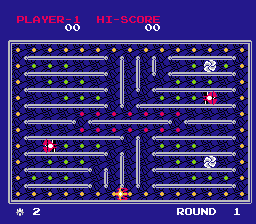
Well, this looks a lot like Raimais. The basic gameplay’s the same: get the energy plates, avoid the enemies, and move to the next stage once you’ve collected everything. You’ve got your throttle and your item button and — good god, what is that noise?
Yeah, so… remember the main theme of Raimais? Damn, what a good piece of arcade music! Well, they re-did the music for the FDS and it’s… uh, something.
https://www.youtube.com/watch?v=8s8QaGlewy8
I guess there’s some attempted use of the extra FDS sound channel, so brownie points for that, but, uh… yeah. I think the only way to react when hearing this is

(Seriously, chiptune people — I know one of you can do a better NES rendition of that song. Please make one.)
It’s also the only piece of music you’ll hear throughout the game, so you’d better get used to it! While the second and third themes of Raimais weren’t as good as the main composition, at least they were there to make the overall soundtrack more dynamic. No such luck here!
Well, moving beyond the music, the game’s taken a bit of a visual hit, too. Admittedly, Raimais wasn’t a game about intense visuals, but it did have a nice atmosphere and design sense that evoked a 1980s vision of the future!. It still comes across here, but not as strongly — the colors are pretty bland, the stage objects and enemies aren’t particularly well-drawn, and there always seems to be far too much onscreen at once.
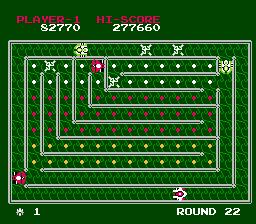 Red-on-green is a particularly noteworthy eyesore-inducer
Red-on-green is a particularly noteworthy eyesore-inducer
If you’ve played Raimais, you might also get this weird nagging feeling that the stages themselves are bigger. You wouldn’t be wrong — the mazes in Youmais actually are substantially larger at 15×10 spaces compared to Raimais’s 13×8 space arenas. Why? Beats me, but it contributes to an overall feeling that there’s just a lot of random stuff crammed into single stages. Which leads into one of Youmais’s biggest issues: the overall stage design.
Raimais’s levels are fantastic. They’re compact, they implement puzzle-solving and precise execution, and they can even get a bit mean. They all feel like the person who laid them out started with a core idea for how they wanted the player to be challenged on that round, then spent extra time fine-tuning the layout and enemy behavior to feel just right. The result is 125 levels that all feel quite distinct from one another, with some that are particularly memorable for the tricks they pull and the strategy they require.
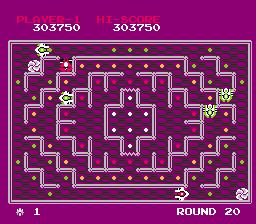
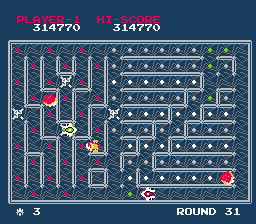
Youmais, in contrast, feels like some guys got ahold of a level editor and just made a bunch of patterns they thought looked cool without stopping to consider how they played. The stages don’t feel particularly interesting or engaging, they drag on for too long, and they lack the strategic elements present in many of Raimais’s best stages.
I wouldn’t call the stage design lazy, though. If anything, I feel like the stage designers at Daiei Seisakusho (the developer Taito contracted for Youmais) went a little too gung-ho, and that’s where the problems arise. For example, there’s a new stage element, warp panels, that will transport you to another section of the maze. Sounds like it has potential to be a neat design concept to add a bit of depth to the levels, right? Actually, no, because the warps are extremely poorly placed 90% of the time, blocking off areas you’d want to get to and requiring you to drive around them (or drive across the screen to the other warp) to reach places they’ve effectively warded off. They’re also one of the most common stage gimmicks: the devs seemed to like them so much they they just threw them in wherever they felt like it.
(Also: the warps give you a few seconds of invulnerability after using them, which is very well thought out and not abusable at all. Just kidding! Once you know how to use your warp i-frames you’ll be taking advantage of them constantly.)
But it’s not just the warps (even though it’s pretty clear that the designers really really liked those warps). Stages seem to be so crammed full of energy plates, walls, enemies, and gimmicks that you’re left wondering if there was any sort of design concept to these levels besides “we need more stuff!” Hell, some stages have so many high-value energy plates littered around them that you’ll score two or three extra lives from points on a single screen. (If you thought the music resetting on each new level in Raimais was annoying, hearing the Youmais version reset after every extra life is maddening.)
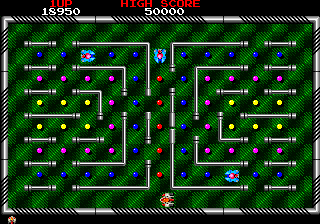
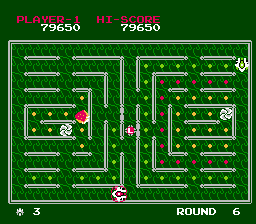
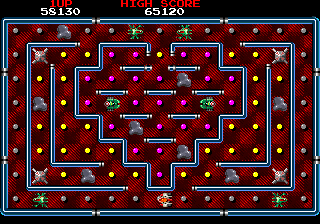

There are several stages that are directly based on patterns from the arcade, though the larger maze size means the developers have adapted them to cram more shit in and changed around hazards and enemies to replace those that don’t exist in Youmais. Oil slicks are gone, certain enemy types (blue and pink codeines and the jumping synthemescs) have completely vanished, and the enemies that do remain have lost some general and stage-specific behavioral nuances. (Norganizers, for example, still try to mirror your controller inputs… sometimes, in open areas. Otherwise, you can’t seem to predict or control them at all.)
At least all of the power-ups are still present and functional. Armor and lasers work just like they do in Raimais, as do Players, Breaks, and Clears. Slow still functions, though its effect is less noticeable given that enemy speed is significantly lower (and doesn’t seem to increase much). Rainbow exists for an instant round-clear, but with an added annoyance: it actually bounces around the map, meaning you’ll probably wind up in a wreck trying to grab it. (It’s also, somewhat comically, the best animated sprite in the game.)

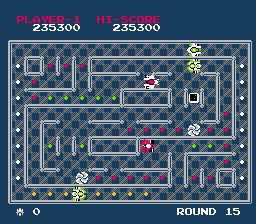
And hey, Reverse Rounds are still in the game! Pick up the O and a passage to a different area will open. So how does Youmais handle the boss fight sequences, you ask?
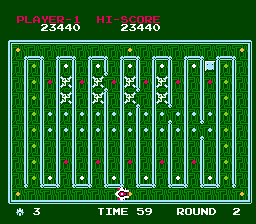
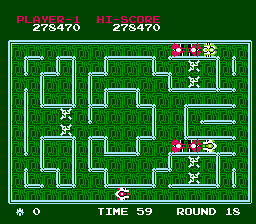
The answer is “not at all.” After a lengthy loading sequence, you get a timed challenge to either collect all the energy plates or beat all of the enemies. Once you’ve done that, you immediately go to the next stage. No meeting with Gum Can, no helpful dialogue, no potential special items to get. You either win and move on (after another loading screen) or, if you die/run out of time are sent back to the stage you came from (after another loading screen).
Yeah, the giant mecha bug on the cover, ripped straight from the arcade version’s key art? Not here, buddy. Talk about false advertising! Once you realize you won’t get anything out of Reverse Rounds except extra loading screens and the “fun” of redoing an entire level should you fail, you’ll probably avoid them altogether.
Then again, I doubt the boss fights would be good even if they did make it into the game because of one crucial gameplay difference: unlike Raimais, where you are constantly moving, the Organizer in Youmais can actually come to a complete stop. This might sound like an improvement, but it really isn’t: a lot of the tension and challenge of Raimais came from the fact that you had to keep moving, necessitating learning techniques like how to control your speed and finding areas to stall effectively when you needed to wait for enemies to scoot out of places. Without that constant motion, Youmais tends to feel painfully slow and dull, and the oversized, haphazardly designed stages don’t help at all.
Also of note: There are only two exits from each stage instead of four, meaning you only have two potential stage variations to pick from. To make up for it, you have to go through fifty stages instead of thirty-two, along with a final stage. Yes, fifty rounds for a single playthrough. That’s about, oh, twenty rounds too many. At least you can save to the disk so you don’t have to go through it all at once, I guess?
Hey, at least Gum Can is here, though! It’d be silly to put him in the manual otherwise. But since you don’t meet him after Reverse Rounds, you instead run into him after every ten rounds. His first greeting to you is pretty similar to that of Raimais, minus the story recap.
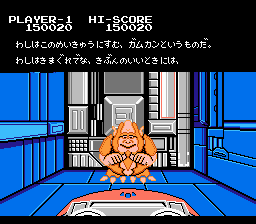

“I’m Gum Can. I live in this maze. I’ll give you hints and items… when I feel like it. We’ll meet again, in another round.”
Let me tell you right now, this incarnation of Gum Can is a filthy goddamned liar, because he isn’t going to give you any of that. Instead, you get to flip the disk over every ten rounds to hear him tell you fourth-wall breaking jokes. I don’t know how many there are in total, but here are some samples.
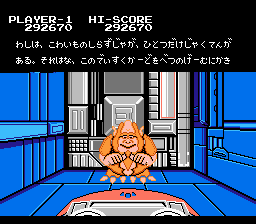

“I’m not afraid of anything! Well, actually, I do have one weakness… if you take this disk card to get rewritten…”
 “Oh, good, you arrived. I’ve got the Light Mirror here… wait, no, actually, I pawned it off yesterday. Sorry about that!”
“Oh, good, you arrived. I’ve got the Light Mirror here… wait, no, actually, I pawned it off yesterday. Sorry about that!”
“I’ve also been hanging around arcades, but aren’t I more handsome in the Famicom version? What do you mean you don’t know?! How unfortunate…”
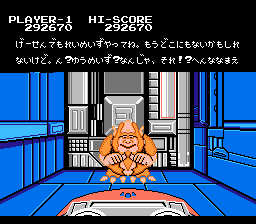
“You can only play Raimais at arcades, but it might already be hard to find… Huh? Youmais? What’s that? What a weird name…”
If you’re wondering about Molto, he does appear… at the very end of the game, in a sequence trying to mimic the arcade cinematics. Since I don’t have anything more to say about the mid-game experience, let’s skip straight to the end.
Here’s Rika approaching the monitor. (The two-frame walk cycle looks hilarious, by the way.)
And there he is, making his first of his two whole appearances in Youmais!
“You’ve done good to make it this far. But the end will be quite different from everything up to now!”
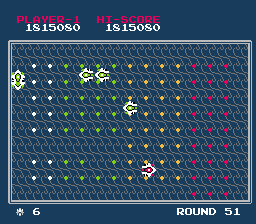 But before the end sequence, you have Youmais’s rendition of Raimais’s Round 32 Gray, aka The Round that Sucks A Whole Lot, now with even more Norganizers. Finish it, flip the disk over, and
But before the end sequence, you have Youmais’s rendition of Raimais’s Round 32 Gray, aka The Round that Sucks A Whole Lot, now with even more Norganizers. Finish it, flip the disk over, and
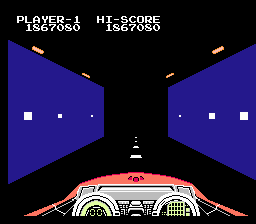
Oh snap, we’re in first person now! Something big’s going to go down! The graphical trickery used here actually looks pretty darn impressive.

Here comes… uh, Makoto(?) running to meet you, but Molto’s creeping up from the side, and he’s armed! Gotta press the shoot button and a direction fast, or else–
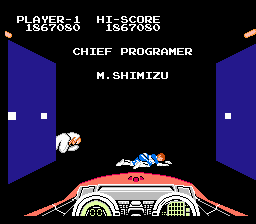 oh, whoops, too late, we hit him after he fired already. rip f
oh, whoops, too late, we hit him after he fired already. rip f
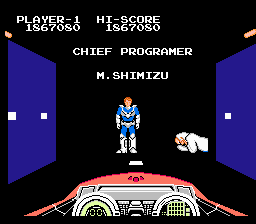
He can pop in from the other side, too, so it’s up to you to react quickly. Shoot him before he fires and congratulations! Makoto(?)’s staring intently at you as the credits roll. How heartwarming.
…Yup, that’s it. Just the credits after that. No secret betrayals or murder plans here. I know NES games tended to have forgettable endings, but I’m still disappointed.
I think by now you can see why I put off writing about this for so long. Youmais isn’t the worst game I’ve played by a longshot — it’s definitely not kusoge-tier. But it’s also not what I’d call good. Perhaps, if you haven’t played Raimais and this is your first time playing a maze-chase game with power-ups and lasers and such, you might be tricked into thinking it’s a hidden gem. But it’s not: it’s a scaled-down port of a supremely better arcade game that doesn’t understand why the game it was adapting was so great. When I play Youmais, it just makes me angry, because I just think of how Raimais is so well designed, so challenging to play, how it’s pleasant to listen to.
By the time I hit round 20 in Youmais, I’m completely on autopilot: mindlessly driving through stages, blowing up enemies when I have to, avoiding taking Reverse Rounds, and remembering nothing about the level I just beat a minute ago. While there’s amusement to be derived from the jankiest of kusoge, Youmais is so bland and so unmemorable that it’s hard for me to find anything genuinely fun in it. Compared to how rewarding racing through Raimais feels, Youmais is downright depressing. At least I’ve finally written about Youmais, so I no longer have to play it.
In short: If you are considering playing Youmais, just play Raimais (the Japanese version) instead. There’s absolutely no reason to do otherwise. Why subject yourself to mediocrity when you could enjoy a fantastic game instead?
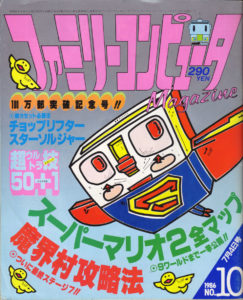
Before I end this review, though, there’s one odd thing worth mentioning. In the late 80s and early 90s before Famitsu had a near-monopoly over Japanese console game magazines, Family Computer Magazine (aka FamiMaga) was one of the more popular publications. Their style of layouts and writing was pretty influential on magazines to come, and even had an impact on Nintendo Power (which was handled by the same publisher as FamiMaga).
One thing FamiMaga was notorious for was publishing a fake cheat every month among all of the real codes and techniques (and giving prizes to folks who could suss out the fake), a practice that I’m sure inspired some of EGM’s early April Fools pranks. Among the prank cheats they covered were things like invincibility in Spelunker, more than two Options in Gradius, a 1UP-dropping Mario statue in Zelda II, how to crash the airship in Final Fantasy… and a way to enable battles against giant boss monsters in Youmais. Except, instead of bugs, you fight the fish from the Darius series. Supposedly.
You can see the fake cheat here on a Japanese Famimaga archives site — I’m not going to post the scan on this site since the person maintaining the archives has a no-reposting rule, and I’m not here to irritate anyone who’s preserving these materials.
And with that, we’re finally done with Raimais and everything associated with it. Or are we?
You may have noticed I’ve been adding things to the main article every so often, and just recently, a few discoveries were made that have made me very excited. Suffice to say, you’re going to be seeing a big update to the original Raimais pages pretty darn soon. Even then, I doubt that’ll be the end of my time with the game. As long as I’m writing about games, I’ll be doing everything I can to make others aware of Rika and her fantastic maze-chase journey.

See you next…
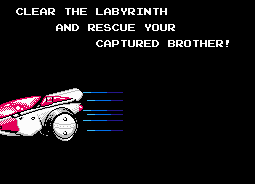
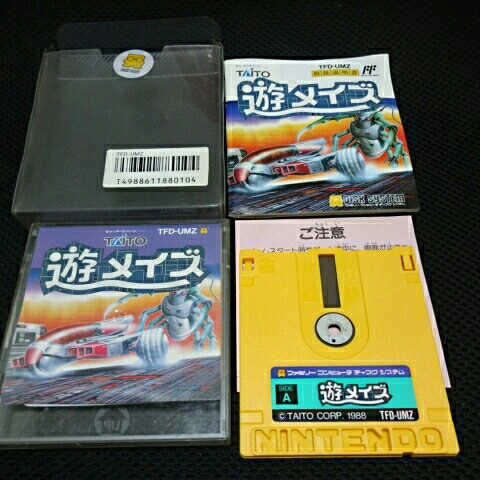
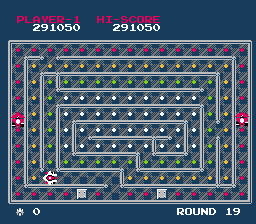
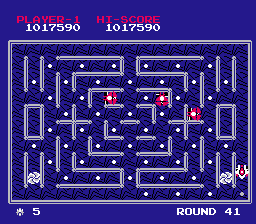
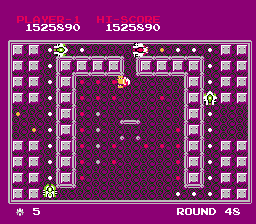
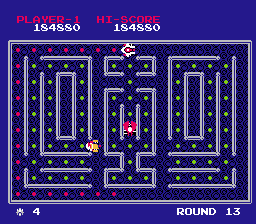

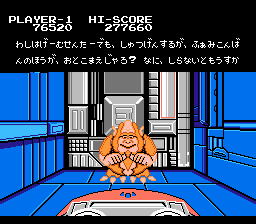

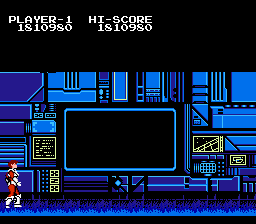
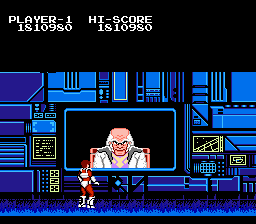
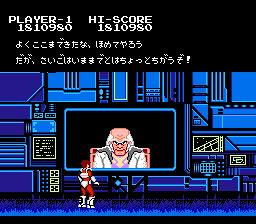

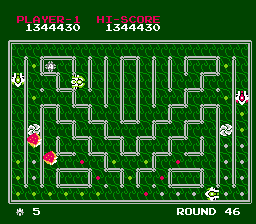
Oh wow – although I read all your Raimais coverage, I didn’t get that “~mais” was meant to be read ‘maze’ until just this article! (I went back an looked and, sure enough, one of the images in one of the Raimais articles does actually show the katakana; I must have missed it when I read those.) What a strange way to romanize it, especially since the roman-character “Raimais” logo was apparently there since the initial Japan release – but wouldn’t the Japanese be even *less* likely (than English speakers) to read ‘ai’ as エイ?
Do you have any idea where the レイ in Raimais comes from? I kinda suspect it’s a play-on-words that I’m not getting, but after seeing Youmais written with a kanji, I wonder if there’s also a kanji-based explanation for the earlier game’s title as well.
Love reading about these, thanks for putting all this together.
I’ve been reading it as “Yohmaisu” all this time. I don’t see any reason to stop.
I was wondering whether I needed to play Youmais, and now I don’t have to! YAAAAAYYYYY
After re-reading the entire article (because I’m weird), I realized that I never posted my commission here when it was finished and only sent it via email of which I initially thought did not send lol. The main theme to Raimais on FDS…done right! https://youtu.be/q_zfOWkvvEs